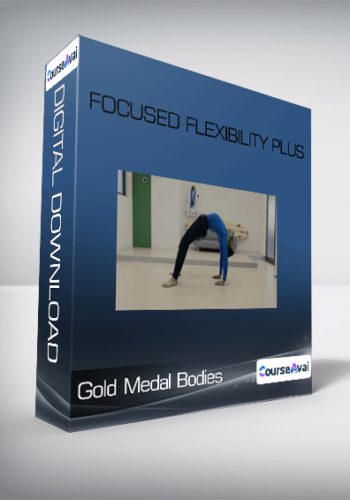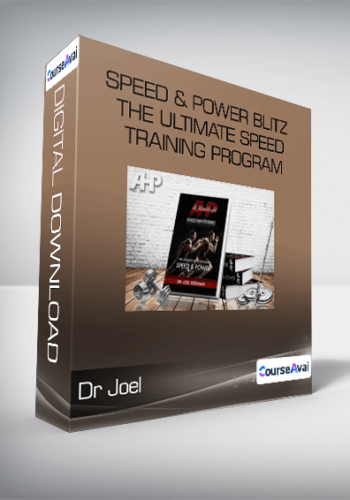
Cyndi Zarbano – 2-Day Critical Care Skills Boot Camp
Original price was: $439.99.$74.70Current price is: $74.70.
Critically ill patients are everywhere these days – on the Med-Surg floor, in the ICU, the PACU, the ED, the OR, even long-term care! A good working knowledge of the concepts for managing high-acuity patients is indispensable.
Join Cyndi Zarbano and learn the latest in essential critical care skills that you must know to be successful, including:
Description
Unlock your potential with the Unlock your potential with the Cyndi Zarbano - 2-Day Critical Care Skills Boot CampCyndi Zarbano - 2-Day Critical Care Skills Boot Camp course for only course for only Original price was: $439.99.Original price was: $439.99.$$74.7074.70Current price is: $74.70.Current price is: $74.70. at at Giolib.comGiolib.com! Explore our comprehensive library of over 60,000 downloadable digital courses across various ! Explore our comprehensive library of over 60,000 downloadable digital courses across various Sports & FitnessSports & Fitness. Get expert-led, self-paced learning at up to 80% savings. Elevate your skills today!. Get expert-led, self-paced learning at up to 80% savings. Elevate your skills today!
DOWNLOAD INSTANTLY
PLEASE CHECK ALL CONTENTS OF THE COURSE BELOW!

 Cyndi Zarbano – 2-Day Critical Care Skills Boot Camp
Cyndi Zarbano – 2-Day Critical Care Skills Boot Camp
- Crisis ManagementCrisis Management
- ABG AnalysisABG Analysis
- Rhythm Interpretation in 5 Easy StepsRhythm Interpretation in 5 Easy Steps
- Central Line CareCentral Line Care
- Mechanical VentilationMechanical Ventilation
- And Much More!And Much More!
DAY ONE: ESSENTIAL ASSESSMENT, INTERPRETATION AND INTERVENTION STRATEGIESDAY ONE: ESSENTIAL ASSESSMENT, INTERPRETATION AND INTERVENTION STRATEGIES
Critically ill patients are everywhere these days – on the Med-Surg floor, in the ICU, the PACU, the ED, the OR, even long-term care! A good working knowledge of the concepts for managing high-acuity patients is indispensable.Critically ill patients are everywhere these days – on the Med-Surg floor, in the ICU, the PACU, the ED, the OR, even long-term care! A good working knowledge of the concepts for managing high-acuity patients is indispensable.
Join Cyndi Zarbano and learn the latest in essential critical care skills that you must know to be successful, including:Join Cyndi Zarbano and learn the latest in essential critical care skills that you must know to be successful, including:
- Rapid AssessmentRapid Assessment
- ABG AnalysisABG Analysis
- Central Line CareCentral Line Care
- Easy Strip InterpretationEasy Strip Interpretation
OUTLINEOUTLINE
Identification & Management of CrisisIdentification & Management of Crisis
- Master “down and dirty” prompt assessment skillsMaster “down and dirty” prompt assessment skills
- End the “Red Flags”End the “Red Flags”
- Rapid stabilizing interventions for the unstable patientRapid stabilizing interventions for the unstable patient
- Manage the decompensating patientManage the decompensating patient
- Better outcomes through quick interventionBetter outcomes through quick intervention
Easy Steps to ABG AnalysisEasy Steps to ABG Analysis
- Acid base imbalanceAcid base imbalance
- 4 abnormal findings when reading your lab result4 abnormal findings when reading your lab result
- A simple tool to rapidly and efficiently interpret ABG’s!A simple tool to rapidly and efficiently interpret ABG’s!
The 5 Steps to Rhythm Strip InterpretationThe 5 Steps to Rhythm Strip Interpretation
- Systematically reviewing the major components of a rhythm stripsSystematically reviewing the major components of a rhythm strips
- Identifying rhythm changes and management of:Identifying rhythm changes and management of:
- Atrial Fibrillation and Atrial FlutterAtrial Fibrillation and Atrial Flutter
- Paroxysmal Supra-Ventricular Tachycardia (PSVT)Paroxysmal Supra-Ventricular Tachycardia (PSVT)
- V-Tach and V-FibV-Tach and V-Fib
Managing Chest DrainageManaging Chest Drainage
- Indications for chest tubesIndications for chest tubes
- Circumventing re-expansion pulmonary edemaCircumventing re-expansion pulmonary edema
- Avoiding common complications of chest drainageAvoiding common complications of chest drainage
Master Central Line CareMaster Central Line Care
- Common issues experienced with central linesCommon issues experienced with central lines
- Using which port for what on a triple lumen PICCUsing which port for what on a triple lumen PICC
- Use of a “cell-saver” to reduce lost hemoglobin during blood drawsUse of a “cell-saver” to reduce lost hemoglobin during blood draws
- The challenge of CVP monitoringThe challenge of CVP monitoring
Pacemakers & AICDsPacemakers & AICDs
- Indications for pacemakersIndications for pacemakers
- Meaning of pacemaker codesMeaning of pacemaker codes
- Types of PacemakersTypes of Pacemakers
- Device managementDevice management
- Practical solutions to common pacemaker problemsPractical solutions to common pacemaker problems
End-of-Life Care in the ICUEnd-of-Life Care in the ICU
- The needs of the patientThe needs of the patient
- Practical tips to help your patients and families with the end-of-life journeyPractical tips to help your patients and families with the end-of-life journey
OBJECTIVESOBJECTIVES
- Identify 5 essentials components of a “down and dirty” assessment in your patient when they have a sudden decomposition in health status.Identify 5 essentials components of a “down and dirty” assessment in your patient when they have a sudden decomposition in health status.
- State 3 rapid interventions that can stabilize a patient who is symptomatic with a low blood pressure.State 3 rapid interventions that can stabilize a patient who is symptomatic with a low blood pressure.
- Recognize the most common causes of arterial blood gas abnormalities.Recognize the most common causes of arterial blood gas abnormalities.
- Quickly identify the 3 most common dysrhythmias using rhythm strip interpretation.Quickly identify the 3 most common dysrhythmias using rhythm strip interpretation.
- Manage the risk to avoid re-expansion pulmonary edema in the patient with a chest tube for pleural effusion.Manage the risk to avoid re-expansion pulmonary edema in the patient with a chest tube for pleural effusion.
- Review the correct technique for opening an occluded central line lumen.Review the correct technique for opening an occluded central line lumen.
- Summarize the difference between failure to capture and failure to sense in a pacemaker and how each is resolved.Summarize the difference between failure to capture and failure to sense in a pacemaker and how each is resolved.
- Recognize the three biggest concerns patients recognize at end of life.Recognize the three biggest concerns patients recognize at end of life.
DAY TWO: ADVANCED MANAGEMENT OF COMPLEX AND CRITICALLY ILL PATIENTSDAY TWO: ADVANCED MANAGEMENT OF COMPLEX AND CRITICALLY ILL PATIENTS
GetGet Cyndi Zarbano – 2-Day Critical Care Skills Boot Camp download
The Advanced Management of Complex and Critically Ill Patients seminar will give you a strong foundation, while integrating tips, timesavers, and stories about real nurses who make a difference in their patient’s lives. This seminar will teach you to master the concepts of critical care and become an expert in your clinical practice. Learn advanced critical care concepts and interventions, including:The Advanced Management of Complex and Critically Ill Patients seminar will give you a strong foundation, while integrating tips, timesavers, and stories about real nurses who make a difference in their patient’s lives. This seminar will teach you to master the concepts of critical care and become an expert in your clinical practice. Learn advanced critical care concepts and interventions, including:
- Advanced cardiac care/hemodynamicsAdvanced cardiac care/hemodynamics
- Advanced neurological careAdvanced neurological care
- Mechanical ventilation managementMechanical ventilation management
OUTLINEOUTLINE
Understand Hemodynamics TodayUnderstand Hemodynamics Today
- Cardiac Output = Heart Rate x Stroke Volume
Cardiac Output = Heart Rate x Stroke Volume
- Use a simple analogy to learn the components and finally get itUse a simple analogy to learn the components and finally get it
- Preload, Afterload and ContractilityPreload, Afterload and Contractility
- Manipulating the mathematical equation to stabilizeManipulating the mathematical equation to stabilize
The ICU Trio in Crisis!The ICU Trio in Crisis!
- IV Fluids – picking the right one for the situationIV Fluids – picking the right one for the situation
- 5 pressor agents – How they work when to use them
5 pressor agents – How they work when to use them
- Blood products! FFP, Platelets, PRBC’s and CryoprecipitateBlood products! FFP, Platelets, PRBC’s and Cryoprecipitate
Would you like to receive Cyndi Zarbano – 2-Day Critical Care Skills Boot Camp ?
Demystify Hemodynamic Waveforms and Correctly Measuring EachDemystify Hemodynamic Waveforms and Correctly Measuring Each
- Assessment clues to hemodynamic instabilityAssessment clues to hemodynamic instability
- Central Venous PressuresCentral Venous Pressures
- Arterial LinesArterial Lines
- Swan Ganz CathetersSwan Ganz Catheters
Mechanical Ventilation for NursesMechanical Ventilation for Nurses
- How to manage patients on ventilatorsHow to manage patients on ventilators
- Avoiding Ventilator Acquired Pneumonia (VAP)Avoiding Ventilator Acquired Pneumonia (VAP)
- Using CPAP or BiPAPUsing CPAP or BiPAP
Manage ShockManage Shock
- Assessment and management of:
Assessment and management of:
- Cardiogenic ShockCardiogenic Shock
- Septic ShockSeptic Shock
- Hypovolemic ShockHypovolemic Shock
Manage the Neuro PatientManage the Neuro Patient
- Use a “5-point Neuro Check” to easily identify changes in conditionUse a “5-point Neuro Check” to easily identify changes in condition
- Stroke and Stabilization
Stroke and Stabilization
- IschemicIschemic
- HemorrhagicHemorrhagic
- DeliriumDelirium
- How to assess & interveneHow to assess & intervene
Life-threatening EKG Changes: Clues from the 12-LeadLife-threatening EKG Changes: Clues from the 12-Lead
- Spectrum of coronary artery ischemiaSpectrum of coronary artery ischemia
- 5-step method for finding myocardial ischemia and injury5-step method for finding myocardial ischemia and injury
- STEMI and NSTEMI – What’s the difference?STEMI and NSTEMI – What’s the difference?
- Location, location, location!Location, location, location!
OBJECTIVESOBJECTIVES
- Summarize the difference between preload, contractility and afterload as components impacting cardiac output.Summarize the difference between preload, contractility and afterload as components impacting cardiac output.
- Identify correct locations for measuring CVP, Arterial Line and Wedge waveforms.Identify correct locations for measuring CVP, Arterial Line and Wedge waveforms.
- Differentiate between hypotonic, isotonic and hypertonic IV fluids and when each is considered most effective.Differentiate between hypotonic, isotonic and hypertonic IV fluids and when each is considered most effective.
- Recognize the blood product of choice for Disseminated Intravascular Coagulopathy.Recognize the blood product of choice for Disseminated Intravascular Coagulopathy.
- Contrast the difference between hypovolemic shock, septic shock and cardiovascular shock in both assessment and treatment priorities.Contrast the difference between hypovolemic shock, septic shock and cardiovascular shock in both assessment and treatment priorities.
- Identify two ways to increase the ventilator patient’s oxygenation status.Identify two ways to increase the ventilator patient’s oxygenation status.
- Compare and contrast CPAP and BiPAP, as well as their target populations.Compare and contrast CPAP and BiPAP, as well as their target populations.
- State 5 common causes of delirium.State 5 common causes of delirium.
- Identify the difference between a STEMI and NSTEMI.Identify the difference between a STEMI and NSTEMI.
Get Get Cyndi Zarbano – 2-Day Critical Care Skills Boot Camp download
Future-proof your knowledge with the Future-proof your knowledge with the Cyndi Zarbano - 2-Day Critical Care Skills Boot CampCyndi Zarbano - 2-Day Critical Care Skills Boot Camp course at course at GiOlibGiOlib! Enjoy lifetime access to high-quality digital content, crafted to advance your career and personal development.! Enjoy lifetime access to high-quality digital content, crafted to advance your career and personal development.
- Lifetime Access:Lifetime Access: Permanent access to all purchased courses. Permanent access to all purchased courses.
- Smart Savings:Smart Savings: Benefit from prices up to 80% off original course costs. Benefit from prices up to 80% off original course costs.
- Safe Transactions:Safe Transactions: Process your payments securely. Process your payments securely.
- Practical Insights:Practical Insights: Gain actionable skills relevant to today's demands. Gain actionable skills relevant to today's demands.
- Instant Availability:Instant Availability: Begin your course immediately after payment. Begin your course immediately after payment.
- Flexible Learning:Flexible Learning: Access content effortlessly on any device. Access content effortlessly on any device.
Start expanding your horizons with Start expanding your horizons with GiOlibGiOlib!!




